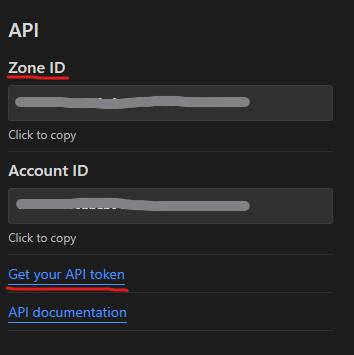Purge Cloudflare Cache Using C# Code
Learn how to clear the cache for Cloudflare in a C# console app
Start typing to search...
Whenever you update a webpage, you should clear the cache for that URL so users can see the new information immediately. Here's how to do it in a C# console app so you don't have to login to Cloudflare each time.
We need a couple of things before we can continue:
Head to the 'Overview' tab of your Cloudflare page, and look at the right column. There you should see your Zone ID. Copy that and save it for later.

Next, click on Get your API token. On the following page, you will want
to save the Global API Key.

In Visual Studio, download the latest Newtonsoft.Json NuGet package.
The following code purges specific URLs if they are listed, otherwise it will purge the entire site.
public class CloudflareCacheHelper
{
private string _userEmail;
private string _apiKey;
private string _zoneId;
// this is the Cloudflare Api
private string _apiEndpoint = "https://api.cloudflare.com/client/v4";
public CloudflareCacheHelper()
{
_zoneId = ""; //zone id you saved earlier
_apiKey = ""; //global api key you saved earlier
_userEmail = "[email protected]";
}
public bool Purge(List filePaths)
{
CloudflareResponse purgeResponse = null;
byte[] data;
// if there are a list of files to purge
if (filePaths?.Count > 0)
{
// convert list of file URLs
CloudflareFileInfo fileInfo = new CloudflareFileInfo
{
Files = filePaths
};
data = Encoding.ASCII.GetBytes(JsonConvert.SerializeObject(fileInfo));
}
else
{
// purge the entire website
data = Encoding.ASCII.GetBytes(@"{""purge_everything"":true}");
}
// create the Http request
HttpWebRequest purgeRequest = WebRequest.CreateHttp($"{_apiEndpoint}/zones/{_zoneId}/purge_cache");
purgeRequest.Method = "POST";
purgeRequest.ContentType = "application/json";
purgeRequest.Headers.Add("X-Auth-Email", _userEmail);
purgeRequest.Headers.Add("X-Auth-Key", _apiKey);
purgeRequest.ContentLength = data.Length;
// send the request
using (Stream fileStream = purgeRequest.GetRequestStream())
{
fileStream.Write(data, 0, data.Length);
fileStream.Flush();
}
// read the response
using (WebResponse response = purgeRequest.GetResponse())
{
using (StreamReader purgeStream = new StreamReader(response.GetResponseStream()))
{
string responseJson = purgeStream.ReadToEnd();
if (!string.IsNullOrEmpty(responseJson))
purgeResponse = JsonConvert.DeserializeObject(responseJson);
}
}
return purgeResponse.Success;
}
}
These classes are to help serialize and deserialize the data and response.
Replace the () with <> for the list declarations.
public class CloudflareFileInfo
{
[JsonProperty("files")]
public List(string) Files { get; set; }
}
public class CloudflareResponse
{
[JsonProperty("success")]
public bool Success { get; set; }
[JsonProperty("errors")]
public IList(object) Errors { get; set; }
[JsonProperty("messages")]
public IList(object) Messages { get; set; }
}
Code that calls the Purge function.
Replace the () with <> for the list declarations.
static void Main(string[] args)
{
CloudflareCacheHelper cch = new CloudflareCacheHelper();
// purge select Urls
bool purged = cch.Purge(new List(string) {
"https://www.your-domain-here.com/your-newly-updated-page",
"https://www.your-domain-here.com/your-newly-updated-page-2"
});
// purge entire site
bool purgedEverything = cch.Purge(new List(string)());
}
Hope this code helps your Cloudflare purging needs!